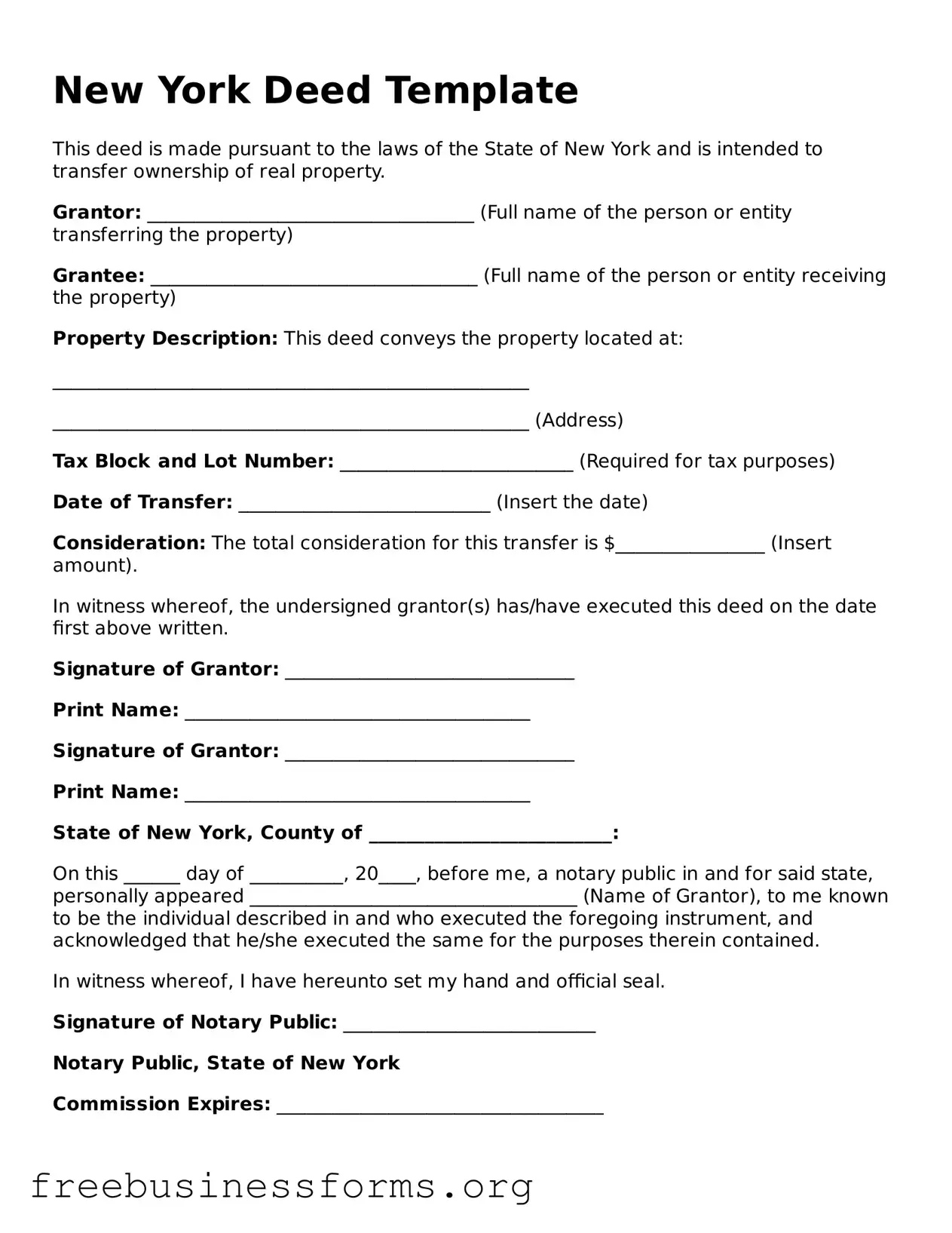New York Deed Template
This deed is made pursuant to the laws of the State of New York and is intended to transfer ownership of real property.
Grantor: ___________________________________ (Full name of the person or entity transferring the property)
Grantee: ___________________________________ (Full name of the person or entity receiving the property)
Property Description: This deed conveys the property located at:
___________________________________________________
___________________________________________________ (Address)
Tax Block and Lot Number: _________________________ (Required for tax purposes)
Date of Transfer: ___________________________ (Insert the date)
Consideration: The total consideration for this transfer is $________________ (Insert amount).
In witness whereof, the undersigned grantor(s) has/have executed this deed on the date first above written.
Signature of Grantor: _______________________________
Print Name: _____________________________________
Signature of Grantor: _______________________________
Print Name: _____________________________________
State of New York, County of __________________________:
On this ______ day of __________, 20____, before me, a notary public in and for said state, personally appeared ___________________________________ (Name of Grantor), to me known to be the individual described in and who executed the foregoing instrument, and acknowledged that he/she executed the same for the purposes therein contained.
In witness whereof, I have hereunto set my hand and official seal.
Signature of Notary Public: ___________________________
Notary Public, State of New York
Commission Expires: ___________________________________
